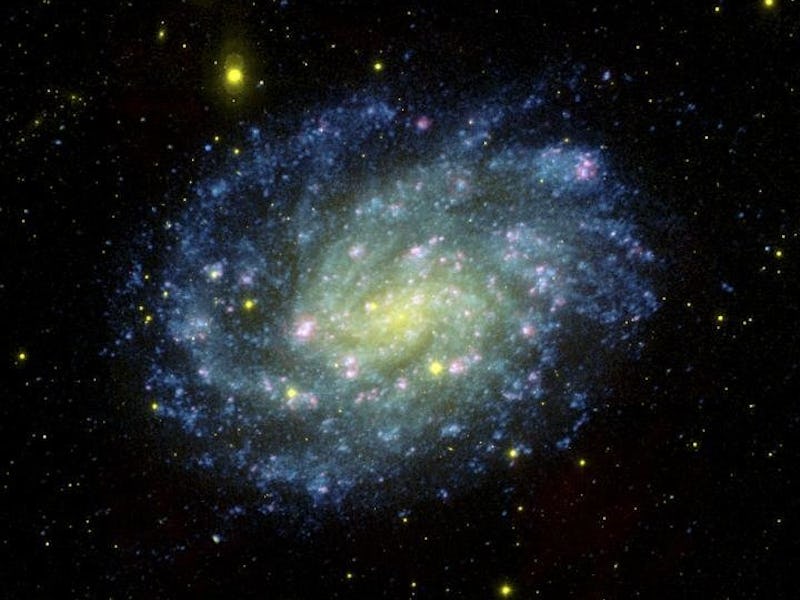We've Found a Very Rare "Imposter" Supernova Discovered in a Nearby Galaxy
Space is a tricky bastard.

Not everything in space is as it seems. In fact, most things in space are, arguably, nothing like they seem. Stars aren’t cute and twinkly up close — they’re violent balls of all-obliterating light and energy. Pluto might be an inconsequential “dwarf” planet, but its surface is a bone-chilling negative 380 degrees Fahrenheit. And, so it happens, not all supernovas are actually supernovas.
As reported in a new study published last week in Monthly Notices of the Royal Astronomical Society, astronomers from the University of Washington had been studying what was once thought to be a supernova in the nearby galaxy NGC300, only to find out they were staring at an imposter.
Yeah, that’s right — space just went all Man in the Iron Mask on you.
The story starts way back in May 2010, when an amateur South African astronomer discovered an object called SN 2010da. All signs indicated it was a regular old supernova — the ultra-bright explosion that results from a dying star. Usually, a supernova fades from view within a matter of weeks, leaving a black hole or neutron star in its wake. But in this case, the supernova in question didn’t fade, lingering conspicuously like house guests overstaying their welcome.
The astronomers soon determined it was not actually a supernova but a regular star that must have been emitting a massive flare of activity — in other words, an imposter. This was strange, but not totally unusual; it was certainly not the first time astronomers have pinpointed supernova imposters, which usually turn out to be massive stars in a binary star system.
Despite this seemingly satisfactory conclusion, the mystery did not end here. The University of Washington researchers soon discovered something really strange about SN 2010da when they pointed Chandra X-ray Observatory telescopes towards its galaxy: It was spitting up a bunch of x-rays, which supernova imposters aren’t supposed to do.
The team mulled over explanations. Was material from the star hitting a nearby dust cloud and causing some strange responses? No; these x-rays were too powerful for that to have been the case.
Instead, they found that the x-rays were characteristic of what you might find from a neutron star — the very dense core remains of a supernova.
A few years later, astronomers took a look at SN 2010da once more, this time using the Hubble Space Telescope. They still saw those bizarre x-rays radiating from the object. The new data, however, suggested that there was a companion piece to this puzzle. But instead of a binary star structure, they theorized SN 2010da was paired with a neutron star itself.
“If this star’s companion truly is a neutron star, that would mean that the neutron star was once a giant, massive star that underwent its own supernova explosion in the past,” said Breanna Binder, a postdoctoral astronomy researcher at the University of Washington and a coauthor of the new study. “The fact that this supernova event didn’t expel the other star, which is 20 to 25 times the mass of our sun, makes this an incredibly rare type of binary system.”
Because there had been no x-ray emissions from the location of SN 2010da before 2010, Binder and her colleagues theorize that the companion neutron star expelling x-rays were signs that the neutron star companion was “turning on,” for the first time since its formation. The x-rays were produced when the imposter star’s material was transferred to the neutron star.
There’s still a lot the researchers need to figure out about SN 2010da, but as of now, this is certainly a one-in-a-million discovery. There’s never been an imposter supernova like this one, and it’s pretty unlikely we’ll stumble on another one like it any time soon.